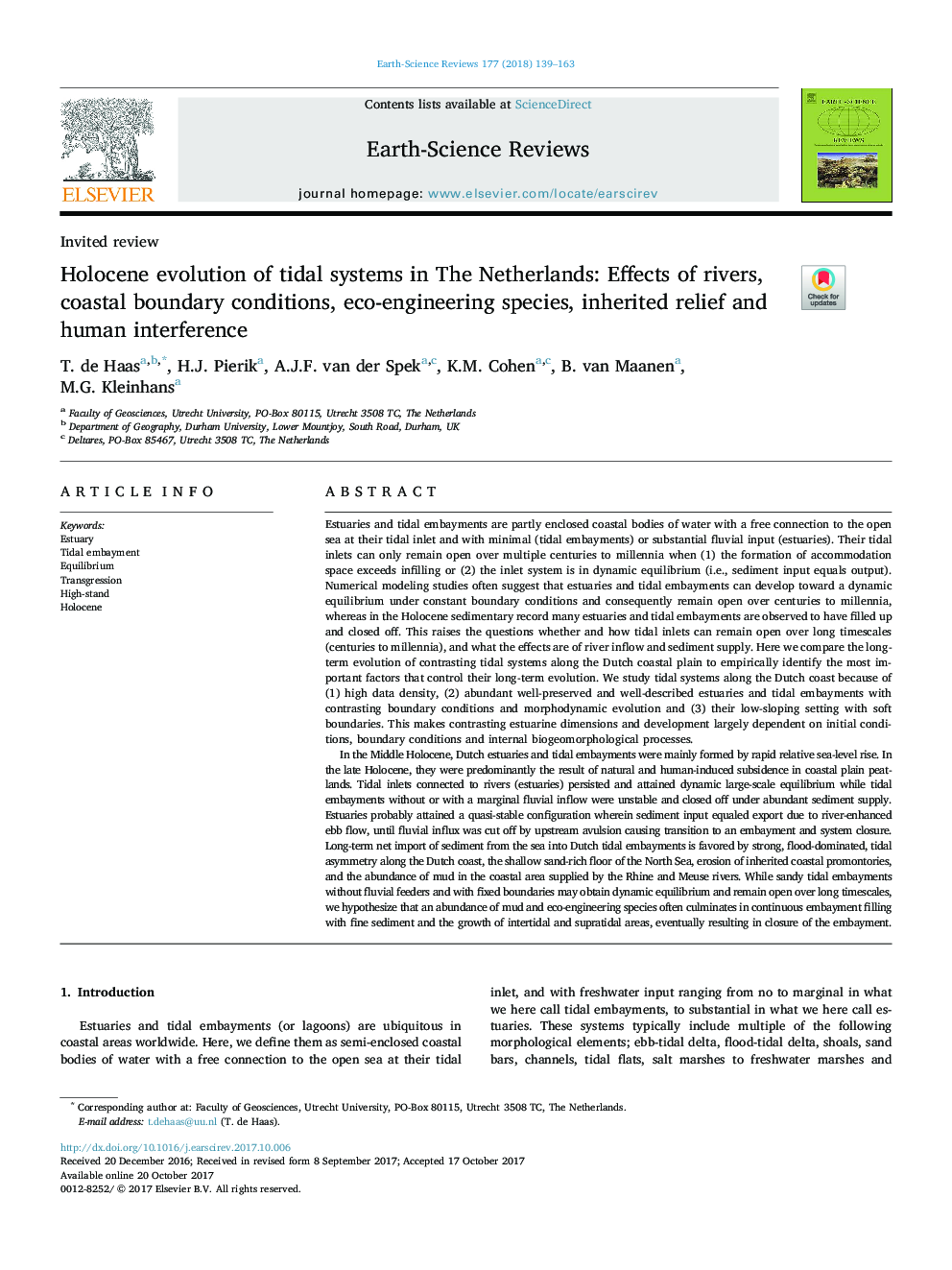| Article ID | Journal | Published Year | Pages | File Type |
|---|---|---|---|---|
| 8913036 | Earth-Science Reviews | 2018 | 25 Pages |
Abstract
In the Middle Holocene, Dutch estuaries and tidal embayments were mainly formed by rapid relative sea-level rise. In the late Holocene, they were predominantly the result of natural and human-induced subsidence in coastal plain peatlands. Tidal inlets connected to rivers (estuaries) persisted and attained dynamic large-scale equilibrium while tidal embayments without or with a marginal fluvial inflow were unstable and closed off under abundant sediment supply. Estuaries probably attained a quasi-stable configuration wherein sediment input equaled export due to river-enhanced ebb flow, until fluvial influx was cut off by upstream avulsion causing transition to an embayment and system closure. Long-term net import of sediment from the sea into Dutch tidal embayments is favored by strong, flood-dominated, tidal asymmetry along the Dutch coast, the shallow sand-rich floor of the North Sea, erosion of inherited coastal promontories, and the abundance of mud in the coastal area supplied by the Rhine and Meuse rivers. While sandy tidal embayments without fluvial feeders and with fixed boundaries may obtain dynamic equilibrium and remain open over long timescales, we hypothesize that an abundance of mud and eco-engineering species often culminates in continuous embayment filling with fine sediment and the growth of intertidal and supratidal areas, eventually resulting in closure of the embayment.
Related Topics
Physical Sciences and Engineering
Earth and Planetary Sciences
Geology
Authors
T. de Haas, H.J. Pierik, A.J.F. van der Spek, K.M. Cohen, B. van Maanen, M.G. Kleinhans,
